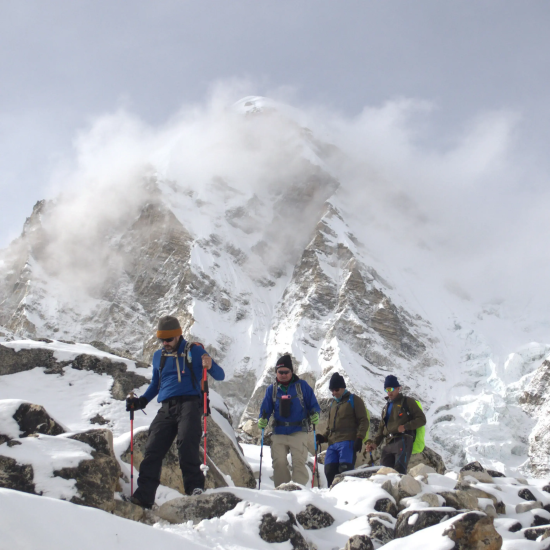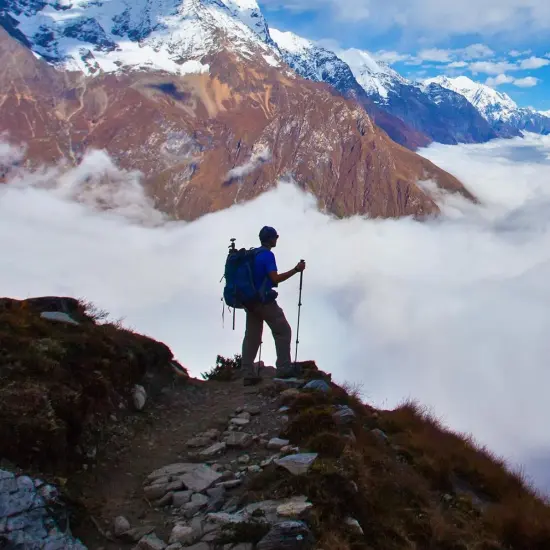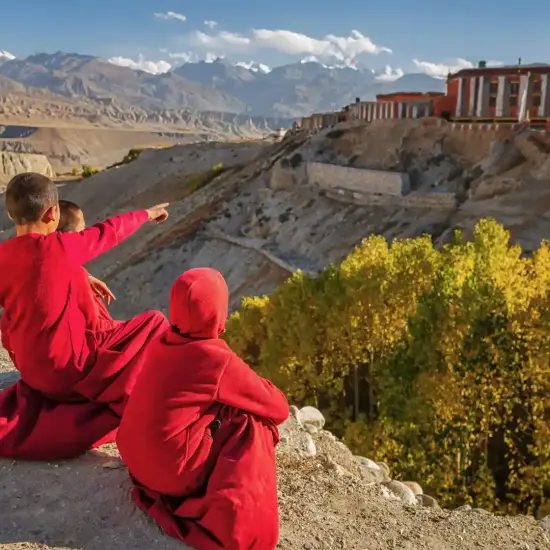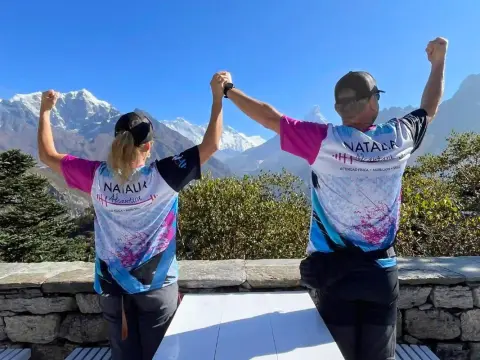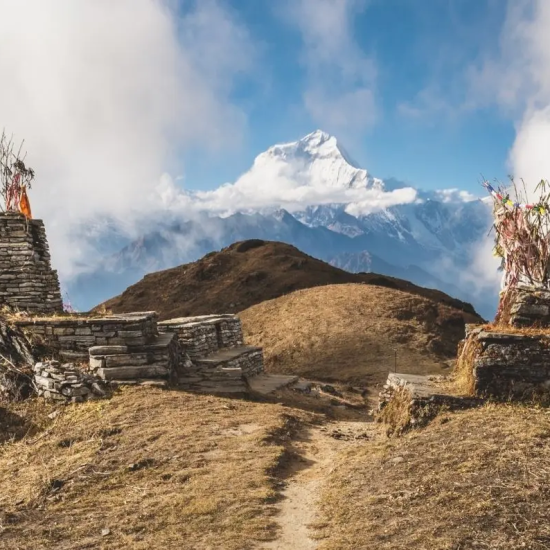Island Peak Climbing – 16 Days Overview
The Island Peak Climbing expedition is a thrilling 16-day Himalayan journey that combines high-altitude trekking, a non-technical yet demanding summit, and deep immersion into the Sherpa culture of the Everest region. Starting from Kathmandu, the capital of Nepal, the adventure begins with a welcome briefing and preparations before heading east to Ramechhap for an early morning flight to the legendary mountain airstrip of Lukla (2,840m). From Lukla, your trek follows the Dudh Koshi River through lush forests and traditional Sherpa settlements, gradually ascending towards higher altitudes.
The first major acclimatization stop is Namche Bazaar (3,440m), a vibrant mountain town perched on a hillside with panoramic views of Thamserku, Kongde, and glimpses of Everest. Here, you’ll spend an extra night to help your body adjust to the altitude. A short hike to the Everest View Hotel or Khumjung village offers stunning Himalayan scenery and cultural encounters. The trail then winds through the pine forests to Tengboche (3,860m), home to the region’s most famous monastery, framed by the dramatic backdrop of Ama Dablam and Everest.
As you ascend beyond Pangboche and into the open alpine terrain of Dingboche (4,410m), the landscape shifts to rockier paths and glacier valleys. Another acclimatization day here allows for exploration of Nagarjun Hill, rewarding you with views of Makalu, Lhotse, and the Imja Valley. The journey continues to the remote outpost of Chhukung (4,730m), where the mountains close in and the challenge intensifies. A high-altitude acclimatization hike to Chhukung Ri (5,546m) offers some of the best views of Island Peak itself, and prepares you physically and mentally for the days ahead.
The real mountaineering phase begins as you move to Island Peak Base Camp (5,087m), where you’ll spend a night under the stars in tents. A full climbing skills training session is conducted by our experienced Sherpa guides, covering the use of ice axes, harnesses, ascenders, crampons, and fixed ropes—skills essential for your summit push. On Day 11, summit day begins before midnight. The climb involves glacier travel, crevasse navigation, and a steep 100-meter ice headwall, before reaching the 6,189-meter (20,305 ft) summit of Island Peak. From the top, you’re rewarded with a stunning 360° panorama of the eastern Himalayas, including Lhotse, Nuptse, Baruntse, Ama Dablam, and Makalu.
After your summit success, you’ll descend to Chhukung and retrace your journey through the same scenic route, returning to Lukla via Pangboche and Namche. A short mountain flight from Lukla brings you back to Kathmandu, where you’ll enjoy a well-deserved farewell dinner and reflect on your incredible achievement.
What to Expect
Island Peak is considered a trekking peak, but make no mistake—it’s a physically and mentally demanding climb. Expect long trekking days at high altitude, with basic accommodations in mountain teahouses and a night in tents at Base Camp. Summit day is particularly tough, requiring a pre-dawn start and 10–14 hours of climbing and descent. Weather conditions can change quickly, and the final push includes crossing glacial terrain and using technical gear. However, no previous mountaineering experience is necessary, as our guides provide a full day of training in Chhukung. With proper preparation, strong fitness, and determination, Island Peak is achievable for adventurous trekkers looking to step into mountaineering.
Permits Required for Island Peak Climbing
Climbing Island Peak requires several official permits:
- Sagarmatha National Park Entry Permit – For entering the Everest region.
- Khumbu Rural Municipality Permit – A local entry permit introduced by the local government.
- Island Peak Climbing Permit – Issued by the Nepal Mountaineering Association (NMA), this special permit allows legal access to climb the peak.
All these permits are included in your package with Places Nepal, and our team will handle all the logistics so you can focus on the experience.
Why Choose Island Peak with Places Nepal
With Places Nepal, you're guided by experienced local Sherpa climbers who know the mountains intimately. Our well-crafted itinerary ensures proper acclimatization, technical training, and personal care throughout the journey. We provide high-quality logistics, a dedicated support team, and flexible customization options. Whether you’re an aspiring mountaineer or a seasoned trekker seeking your first summit, climbing Island Peak with us means adventure with safety, authenticity, and heart.

















































